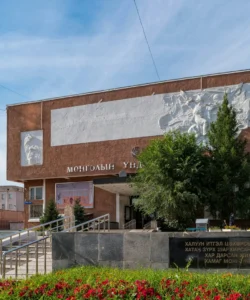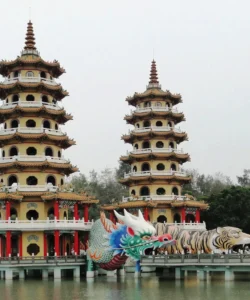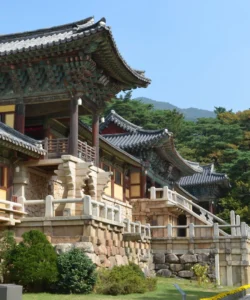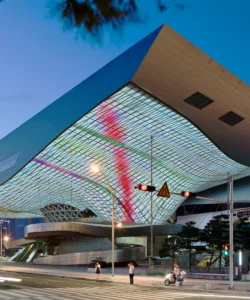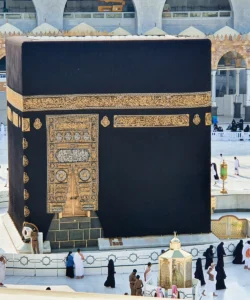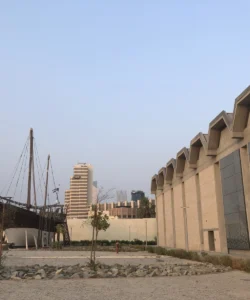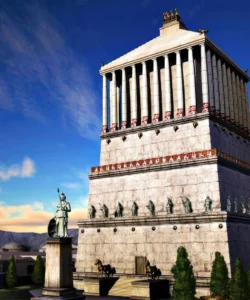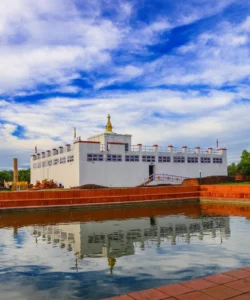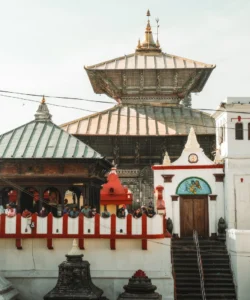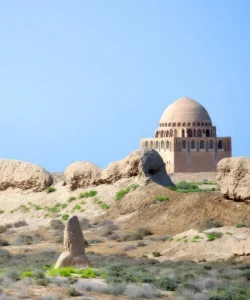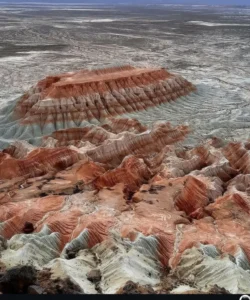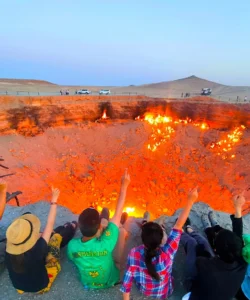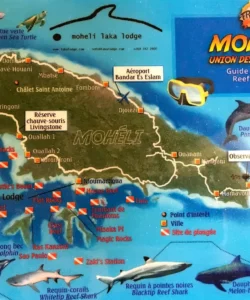The Grand Palace in Bangkok, Thailand, is a magnificent complex of highly decorated buildings, halls, and temples that served as the official residence of the Kings of Siam (and later Thailand) from 1782 to 1925. Located on the banks of the Chao Phraya River, it is an architectural marvel and the spiritual heart of the nation, embodying centuries of Thai history, artistry, and religious devotion. Today, while no longer a royal residence, it remains the site of important state functions and royal ceremonies, and is undoubtedly Thailand’s most revered and visited landmark.
![]()
Name: The Grand Palace (พระบรมมหาราชวัง, Phra Borom Maha Ratcha Wang)
Address: Na Phra Lan Road, Phra Borom Maha Ratchawang, Phra Nakhon, Bangkok 10200, Thailand. It is situated in the historic Rattanakosin Island area of Bangkok.
How to get there:
The Grand Palace is a major tourist destination and is very accessible within Bangkok:
- By Boat (Recommended): This is one of the most popular and scenic ways. Take the BTS Skytrain to Saphan Taksin Station (S6, Exit 2). From there, go to Sathorn Pier and take a Chao Phraya Express Boat (Orange Flag boat is most common) to Tha Chang Pier (N9) or Tha Tien Pier (N8). The Grand Palace is a short walk from either pier (Tha Chang is slightly closer).
- By MRT (Subway): Take the MRT Blue Line to Sanam Chai Station (Exit 1). From there, it’s a relatively short walk (around 10-15 minutes) to the Grand Palace, passing by the Museum Siam.
- By Bus: Numerous public bus routes (e.g., 1, 3, 25, 47, 53, 508) stop near the Grand Palace or Wat Phra Kaeo.
- By Taxi/Tuk-Tuk: Taxis and tuk-tuks are readily available throughout Bangkok. Ensure you agree on a price beforehand for tuk-tuks, and insist on the meter for taxis to avoid overcharging.
- Hop-on-hop-off Tourist Boat: The Chao Phraya Tourist Boat (blue flag) stops at Tha Maharaj Pier (near the Grand Palace) and is a convenient way to visit multiple riverside attractions.
Landscape and Architecture:
The Grand Palace is not a single building, but a vast and intricate complex of more than 100 buildings, halls, pavilions, and courtyards, covering an area of over 218,000 square meters. Its architecture is a dazzling blend of traditional Thai, Khmer, and European styles, characterized by:
- Wat Phra Kaeo (Temple of the Emerald Buddha): The most sacred and prominent part of the complex. This temple houses the Emerald Buddha, a highly revered statue carved from a single block of jade, clothed in gold. The temple grounds are an overwhelming riot of glittering gold, shimmering mosaics, intricate glass and mirrorwork, golden stupas (chedis), and elaborate murals depicting scenes from the Ramakian (the Thai version of the Hindu epic Ramayana). The scale and detail are astonishing.
- Phra Maha Monthien Buildings (Middle Court): A group of traditional Thai-style royal residences and throne halls, including the Amarin Winitchai Hall (used for important state ceremonies) and the Phra Thinang Phaisan Thaksin Hall (where the coronation ceremonies traditionally take place). These feature multi-tiered roofs, gilded spires, and rich traditional Thai ornamentation.
- Chakri Maha Prasat Hall: A unique and iconic building that dramatically fuses traditional Thai and European (Italian Renaissance) architectural styles. Its lower part resembles a grand European palace, while the roof is distinctly Thai, with green and orange tiles and golden spires (prangs). It was built by King Rama V (King Chulalongkorn) in the late 19th century and reflects his fascination with Western culture.
- Dusit Maha Prasat Hall: A classic example of traditional Thai architecture, with a cruciform plan and a magnificent tiered roof, used for royal funerals and other ceremonies.
- Outer, Middle, and Inner Courts: The complex is traditionally divided into these three sections, reflecting the hierarchy of public, semi-private, and private royal functions. The Inner Court was historically reserved for the King’s consorts and children and is not open to the public.
- Walls and Gates: High white walls with battlements and numerous intricately decorated gates surround the entire complex, creating a “city within a city.”
- Gardens and Courtyards: Interspersed throughout the complex are manicured lawns, traditional Thai gardens, and open courtyards that provide space and contrast to the densely packed buildings.
What makes it famous:
The Grand Palace is famous for:
- Home of the Emerald Buddha (Wat Phra Kaeo): This is its undisputed highlight. Housing Thailand’s most sacred and revered Buddhist image, the Temple of the Emerald Buddha is a spiritual heartland and an unparalleled showcase of Thai religious art.
- Symbol of the Thai Monarchy: It served as the official residence and administrative center for kings of the Chakri Dynasty for over 150 years, making it the most significant symbol of Thai royalty and national identity.
- Architectural Grandeur and Diversity: The sheer scale, intricate detail, and fusion of architectural styles (Thai, Khmer, European) are mesmerizing, representing the zenith of Thai craftsmanship and a unique cultural blend.
- Historical and Cultural Significance: It has witnessed centuries of Thai history, including coronations, state ceremonies, and royal life, offering profound insights into the nation’s past and traditions.
- Top Tourist Attraction: Consistently one of the most visited sites in Thailand, attracting millions of visitors annually, drawn by its beauty, history, and spiritual aura.
- Still Used for Ceremonies: Although the royal family moved their primary residence elsewhere in 1925, the Grand Palace remains an active site for important royal ceremonies, state functions, and religious rituals, reinforcing its ongoing significance.
Differences from some other wonders:
The Grand Palace, while a royal palace like many others, possesses several unique distinctions:
- Integrated Royal Temple: Its most significant difference is the integral presence of Wat Phra Kaeo (Temple of the Emerald Buddha) within the palace grounds, making it a combined spiritual and temporal power center. Unlike many European palaces where a royal chapel might be separate, here the national religious shrine is physically and symbolically inseparable from the royal residence. This fusion of royal and divine authority within one complex is a hallmark.
- Dazzling Opulence over Subtlety: While palaces like Korea’s Gyeongbokgung prioritize Confucian simplicity and harmony with nature, the Grand Palace of Bangkok embraces overwhelming, glittering opulence. Every surface of Wat Phra Kaeo is adorned with gold, mirror mosaics, and vibrant colors, creating a maximalist aesthetic that is quintessentially Thai.
- Architectural Fusion (Chakri Maha Prasat): The Chakri Maha Prasat Hall is a rare and striking example of a deliberate and prominent fusion of Western architectural form (lower European palace structure) with a completely traditional Thai roof. This direct, almost jarring, blend is highly distinctive compared to palaces that either fully embrace one style or have more subtle influences.
- Continuous Evolution & Asymmetry: Unlike rigorously symmetrical imperial palaces (like Beijing’s Forbidden City or even Gyeongbokgung’s original design), the Grand Palace evolved organically over centuries, resulting in a more asymmetrical and eclectic layout. It’s a collection of buildings added over time, reflecting different reigns and tastes, rather than a single master plan.
- Focus on the Emerald Buddha’s Sanctity: The unparalleled reverence for the Emerald Buddha within the complex is a defining spiritual aspect. The ritual of the King personally changing the Buddha’s robes three times a year symbolizes the monarch’s role as protector of Buddhism and the nation’s spiritual well-being, a unique and ongoing royal tradition.
In essence, the Grand Palace in Bangkok is a breathtaking and multi-layered wonder, a vibrant tapestry of Thai history, religious devotion, and artistic brilliance, offering an unparalleled glimpse into the heart of a proud and ancient kingdom.

